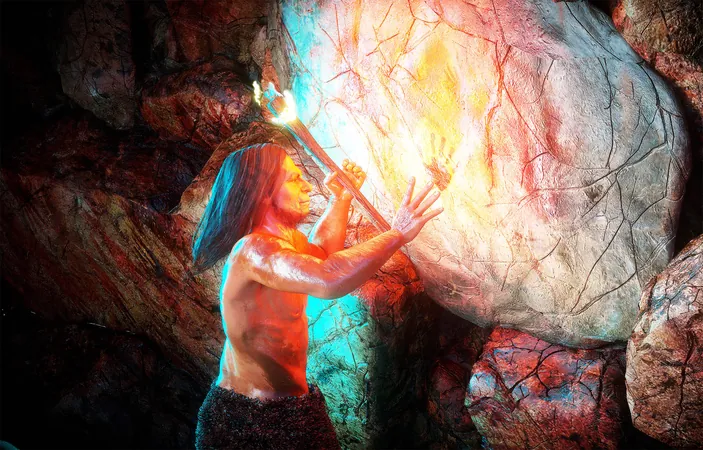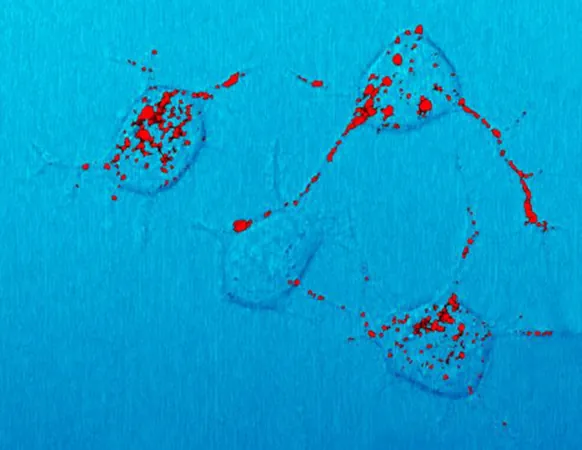
Did Early Humans and Neanderthals Recognize Their Differences? New Research Unveils Surprising Insights!
2025-04-06
Author: Ming
Facial Evolution: Understanding the Differences
Anthropologists and evolutionary biologists have long debated the reasons behind these stark facial differences. As researchers investigate the development of facial bones in both species, they are beginning to uncover significant developmental changes that may have led to a more lithe appearance distinctive in modern humans.
A groundbreaking study led by Alexandra Schuh from the Max Planck Institute for Evolutionary Anthropology employed a comparative approach, looking at facial bone growth in human fossils, Neanderthal remains, and even chimpanzee skeletons to uncover the underlying evolutionary mechanisms at play. This meticulous research revealed that human facial growth ceases earlier in life than that of Neanderthals, contributing to a leaner and more delicate facial structure.
The Science Behind Facial Growth
The research highlights a critical finding: humans stop growing facial bones by the end of adolescence, while Neanderthals continued to develop longer, resulting in their robust features, such as a pronounced jaw and midface. This difference in growth patterns is pivotal—it suggests that our ancestors evolved different adaptations that may have conserved energy and supported vital functions like chewing, which has significant implications for our survival strategies.
According to Schuh, “Our findings reveal that a change in development—particularly during late growth stages—led to smaller faces. This evolutionary tweak coincided with earlier cessation of growth, setting modern humans apart from their hefty-boned relatives.”
Ecological and Genetic Influences
While advances in food processing and cooking could have played roles in shaping our jaw structure, other factors such as social behaviors and genetic mechanisms are also considered influential. It is posited that hormonal changes during puberty could impact bone growth rates, potentially leading to the facial differences we see today.
Researchers are now narrowing in on how environmental factors, genetic predispositions, and cultural practices intertwine over generations to shape not just facial structures but also social behaviors among early humans and Neanderthals.
Toward a Deeper Understanding of Human Evolution
To expand this research further, scientists plan to examine a broader range of fossils from different epochs, seeking to map shifts in facial growth rates and adaptational changes corresponding to survival demands in varying environments.
These studies not only hold the key to understanding our divergent evolution but also shed light on social dynamics in early human communities. As facial expressions and features are crucial for social interaction, a smaller face may have provided advantages in communication and social cohesion—factors essential for thriving in complex social networks.
Conclusion: The Path Ahead
In conclusion, as anthropologists continue to delve into the history of facial evolution, they uncover not just differences in appearance but also deeper connections between biology, culture, and the environments that shaped our evolutionary past. Understanding the timeline of facial growth and its implications may provide a clearer picture of what it means to be human.
As exciting new discoveries emerge and methodologies advance, we'll continue to gain insights into how each subtle change in our anatomy has directed our evolutionary journey—unraveling the mysteries of our ancestors and the legacy they left behind.
Stay tuned as more revelations about early human evolution unfold, promising to illuminate the complex tapestry of our shared history!



 Brasil (PT)
Brasil (PT)
 Canada (EN)
Canada (EN)
 Chile (ES)
Chile (ES)
 Česko (CS)
Česko (CS)
 대한민국 (KO)
대한민국 (KO)
 España (ES)
España (ES)
 France (FR)
France (FR)
 Hong Kong (EN)
Hong Kong (EN)
 Italia (IT)
Italia (IT)
 日本 (JA)
日本 (JA)
 Magyarország (HU)
Magyarország (HU)
 Norge (NO)
Norge (NO)
 Polska (PL)
Polska (PL)
 Schweiz (DE)
Schweiz (DE)
 Singapore (EN)
Singapore (EN)
 Sverige (SV)
Sverige (SV)
 Suomi (FI)
Suomi (FI)
 Türkiye (TR)
Türkiye (TR)
 الإمارات العربية المتحدة (AR)
الإمارات العربية المتحدة (AR)